Click the A4 Avant for a high-res gallery
The A4 is Audi's bread-and-butter, representing half of the brand's volume in the US market. So, when the premium brand from the Volkswagen group introduces a new version of its volume leader, it's a big deal. That's why Audi invited a contingent of American media over to Europe this week to play with the new A4 -- first on its home turf in Deutschland and then bombing around the Spanish resort island of Ibiza. The completely redesigned B7-platform A4 debuted in sedan form last September at the Frankfurt Motor Show, while the Avant wagon dropped last month in Geneva.
As is typical for most German cars, European customers get a much wider array of powertrain choices than we Americans do. With the US dollar in free-fall against the Euro, brands like Audi have to cut costs in order to be able to sell their vehicles here at a competitive price point. A big part of that means simplifying the number of product combinations that get shipped over. That means US Audi dealers will get sedans with either a 2.0L TFSI four-cylinder or a 3.2L FSI V6. The wagons will only get the four banger. All models will use a new fast-shifting ZF six-speed autobox, and only the front-wheel-drive 2.0L will be available with a shift-it-yourself six-speed with a third pedal. The automatic will of course be equipped with paddle shifters for those inclined to pretend they are Dindo Cappello. Follow the jump to find out what's new about the latest A4 and what it's like to drive with some of the European engines that most Americans will never get to sample.
Photos Copyright ©2008 Sam Abuelsamid / Weblogs, Inc.
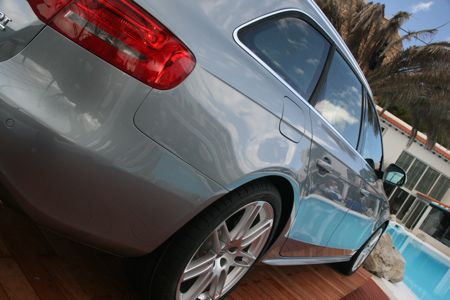
In the summer months, Ibiza is the vacation playground of large numbers of British and German tourists who fly down to hang out on the sunny beaches and dance and drink all night in the clubs. Early April is definitely the off-season, but it provided a great opportunity to thrash some German metal on switchbacks that wind their way through the mountains on the northern part of the island. Don't be too jealous, though -- from the time our plane landed until we took off again, we were only the island for about 21 hours and beaches were not part of the plan.
Before we jetted to the Mediterranean, though, we got to play with the A4 on its home turf. Following our visit to the R8 factory in Neckarsulm, we jumped into a fleet of A4 sedans for a run to the home office in Ingolstadt. The cars for that journey were a mix of 2.7L and 3.0L TDI V6 units with your humble narrator opting for a 3.0L manual transmission quattro variant. If you want to understand why Europeans love their diesel engines, just fly into Stuttgart, rent an A4 3.0 TDI quattro and make the run to Munich via Neckarsulm and Ingolstadt. Do you that and you may never touch another gasoline engine.
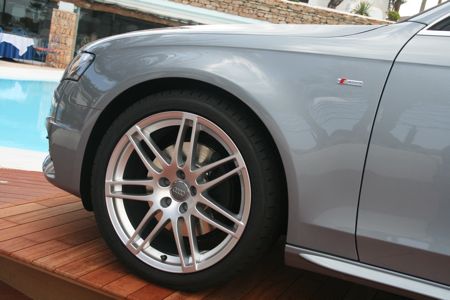
Our drive was a mix of rural roads and the autobahn. While speed limits and traffic congestion are the order of the day in the vicinity of any major cities, in between, when you see the circular sign with the diagonal black slashes, the limit is whatever is prudent for the conditions. Prudence behind the wheel means different things depending on the weather, traffic and what you're driving (not to mention your skill level). In the diesel quattro, that meant easy cruising at 160 km/h with occasional forays up to and beyond 200 km/h when the rain stopped and the traffic cleared.
From cold, overcast and rainy Munich we headed for the sun of Ibiza. Following a briefing on what's new and then pairing up, we selected our mounts for the initial run from the airport at the south end of the island to the hotel at the northern end. John Paige of the Baltimore Sun joind me as we grabbed a 1.8L TFSI four-cylinder with a 6-speed manual. The 184 lb-ft torque available from only 1,500 rpm made the 160 hp feel surprisingly adept. For most normal driving, people would likely find this powerplant sufficient for their daily needs. American drivers won't get that option.
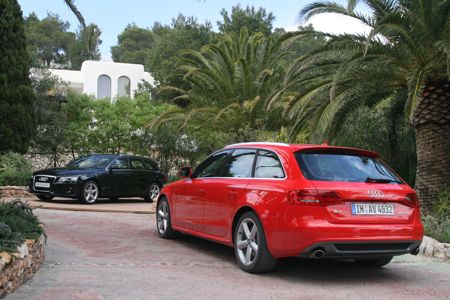
The next step up the ladder is the 2.0L TFSI, which will be the only engine in the US Avant, combined with the automatic transmission and quattro. This configuration was unfortunately not part of the test fleet. The only 2.0L models available were front-wheel-drive manuals, which we will get in the sedan. The 2.0L can be had in 180 hp and 211 hp flavors; guess which one we get (Clarification: The US market will only get the more powerful 211hp four cylinder, not the 180hp version). The 211 hp unit actually feels quite strong thanks to the healthy 258 lb-ft of torque. Running hard through the mountains on Ibiza, the FWD model exhibited some torque steer when accelerating hard out of tight corners along with some very mild understeer.
The FWD Avants that were part of the test weren't equipped with Audi Drive Select, which we'll get back to in a minute. Flinging the FWD model through twists showed it to be a very capable handler with only modest understeer. Traditionally ,Audi's have always had long front overhangs as a result of their longitudinally-mounted engines hanging out in front of the axle. The new layout moves the front axle forward by 6 inches, giving the car much improved balance. Moving the battery from underhood out to the back also helps to reduce the nose heaviness of past iterations. Nonetheless, the FWD models can be slightly uncomfortable when really pushed to their limits.
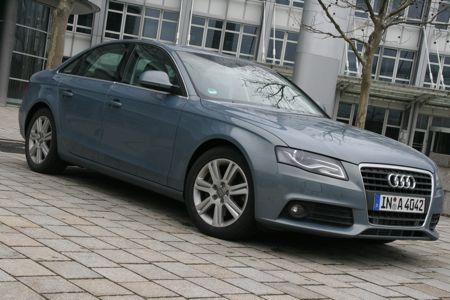
The quattros, however, don't have this issue at all. The latest edition of Audi's quattro system still uses an open Torsen center differential, so there's no active torque vectoring like you'll find on BMW's xDrive or Acura's Super Handling-All Wheel Drive. The added weight of the rear drive hardware is mostly held by the rear tires which now do their fair share of the work. In the past, quattros have always had a nominal 50/50 torque split. The base ratio has now shifted to 40/60 front to rear. That means the front tires can use more of their available grip for directional control while the rears push the car through a turn.
According to Audi engineers, the development team is working on some torque vectoring mechanisms that will likely appear in the coming years. The system they are developing would be applied to the rear axle only to direct drive torque to one wheel or the other, helping to impart a turning moment on the car so that it can go where the driver wants it.
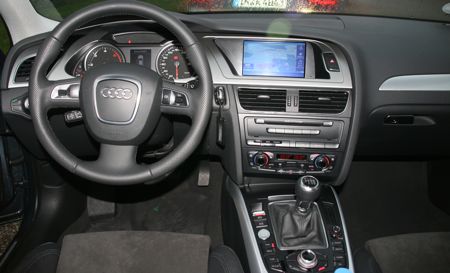
Audi Driver Select takes this even further by adding driver-selectable options for comfort, auto and dynamic. The ADS system integrates adaptive dampers, the electronic throttle control, shift points and speed (if you have an automatic transmission) and the Dynamic Steering system. Comfort mode slows things down and makes everything smoother when you're just tooling around. Switch it to dynamic or let auto decide when to use the dynamic settings, and this feels like a whole new car.
The quattro with ADS was amazingly sure-footed when being thrashed hard. The car felt better balanced and always went where it was pointed, right up to the limits of adhesion. Where the FWD model almost felt like the rear was dancing around a bit at the limits, the Quattro felt utterly nailed to the road. How much of that is attributable to ADS and how much to quattro is hard to tell at this point since there were no non-ADS quattros available to test.
Another of the new features available on the A4 is dynamic steering. This is essentially an active steering system that uses a super-position gear to vary the steering ratio depending on the vehicle speed. At lower speeds, such as maneuvering in a parking lot, the ratio is sped up. At higher speeds, it slows down for added stability.
The dynamic steering hardware is also used for other functions. It works in conjunction with the stability control to provide some counter-steering during split traction conditions. Normally, hitting the brakes when one side of the car is on a lower traction surface causes the ABS to reduce braking pressure to keep the car from spinning before the driver can react to the situation. By counter-steering faster than the driver can, the new system can allow more aggressive braking and shorter stopping distances.
The dynamic steering also plays a part in the lane assist system. Like the lane departure warning Nissan offers on the Infiniti EX35, a camera above the rearview mirror detects when the car is wandering out of the lane. When the car starts to drift, the steering assist sends a slight vibration through the steering wheel to warn the driver. Unlike the Infiniti, it doesn't attempt to guide the car back to the lane. According to Audi's Udo Rugheimer, they felt that consistent behavior was more important than actively pushing the car back into the lane. The current ability to correct for lane departure just isn't consistent enough to reliably count on. Having tried the system in the EX, I can agree.
We actually took out the 3.0 TDI quattro Avant before the FWD 2.0L, and the difference between the two was startling. As front-wheel-drive cars go, the A4 felt really good, but adding quattro takes it to a whole new level. After the quattro, the front-drive car actually felt a little loose through the corners. Most Americans will likely never drive an A4 as hard as we did on Ibiza and will find the front-driver to be all the car they ever need. For those people, the weight savings from leaving behind the rear axle drive hardware will yield better fuel efficiency.
The 3.2L gas V6 quattro felt better through the corners than the front-drive cars as well, never at a loss for traction. However, the diesel V6 would definitely be the engine of choice for this car. The 3.2L gas engine scores 265 hp and 243 lb-ft of torque. That peak torque comes from 3,000-5,000 rpm. The diesel is only rated at 240hp but the torque hits 369 lb-ft from 1,500 rpm all the way through 3,000. It just pulls beautifully everywhere.
Since the wagon only comprises ten percent of A4 sales in the US, Audi is keeping the initial lineup simple, hence the 2.0L TFSI/automatic trans/quattro combination. If the share of wagons starts to climb, Audi will consider other powertrain options. According to Executive VP Johan de Nysschen, the company will watch the response to the Q7 diesel next year along with diesel fuel prices in the US before making a final decision on an A4 TDI for America. If it does happen, we will likely get the same 3.0L TDI that's going into the Q7. Right now, the company remains optimistic about the prospects for diesels in the U.S., expecting them to eventually take 10-15% of the light vehicle market. In the meantime, we'll have to settle for gas engines when the new A4s arrive in the States this September. Prices will of course be higher, but de Nysschen said the company will be working aggressively to keep the increases to a minimum.
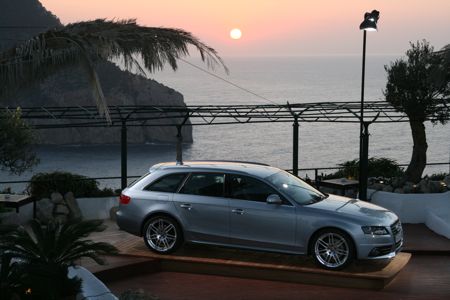
Photos Copyright ©2008 Sam Abuelsamid / Weblogs, Inc.
Our travel and lodging for this media event was provided by the manufacturer.

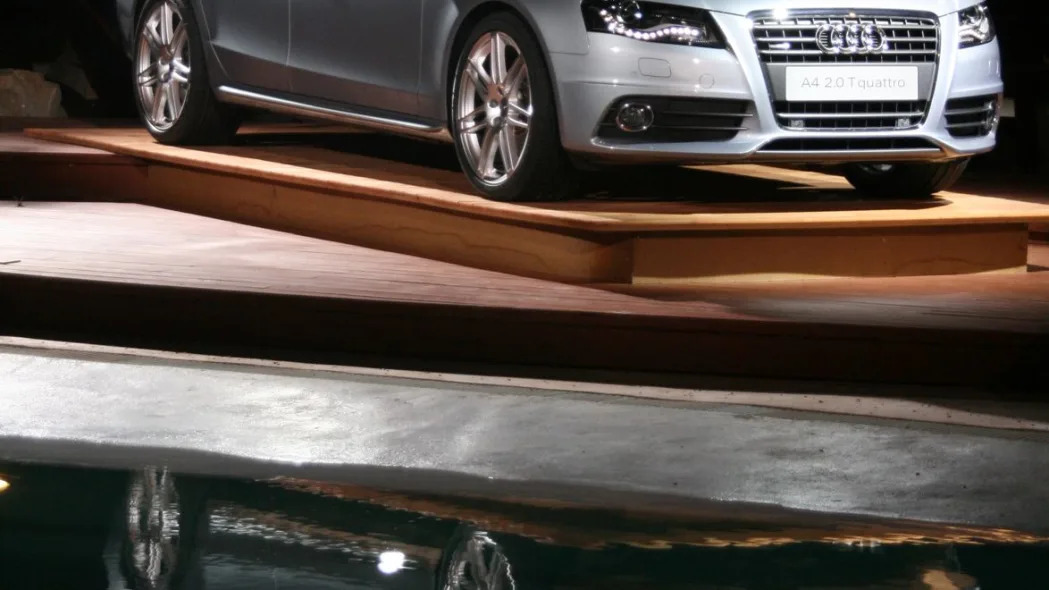

Sign in to post
Please sign in to leave a comment.
Continue